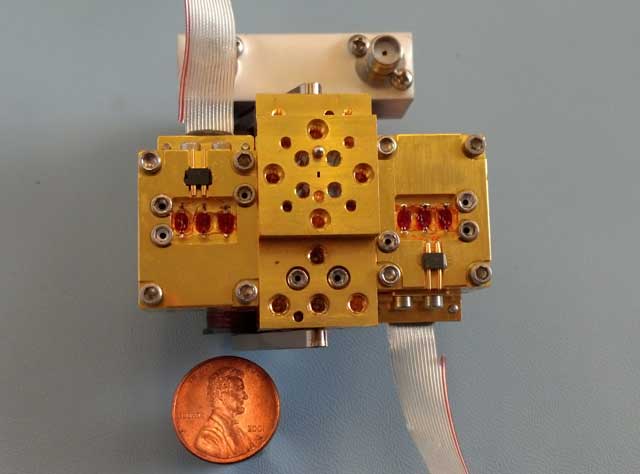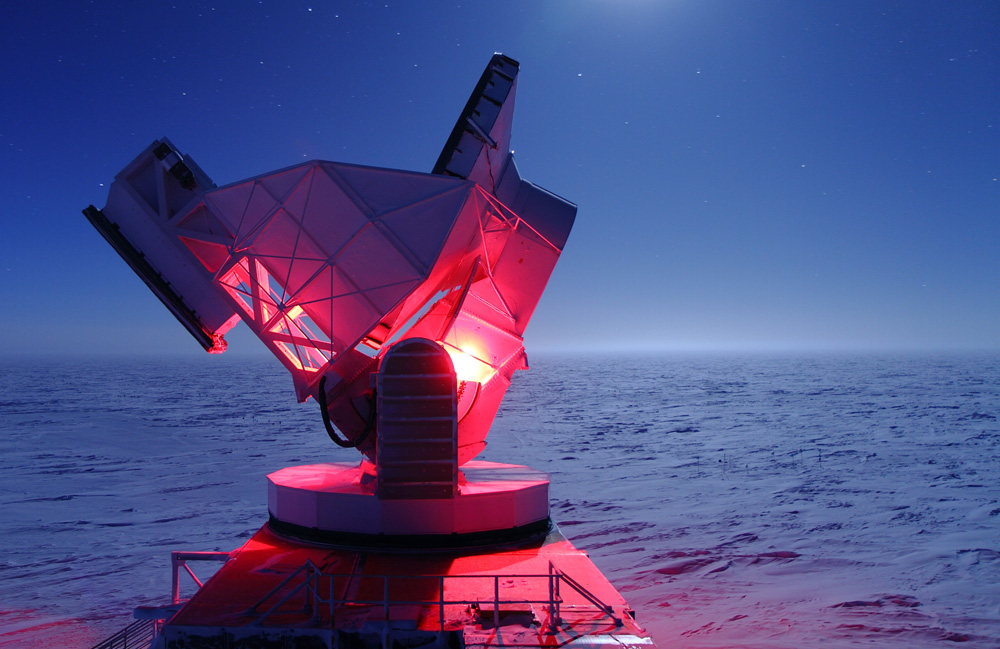Joining togetherSouth Pole Telescope to be used to form Earth-sized instrument to study black holePosted June 27, 2014
The South Pole Telescope (SPT) Now the powerful astrophysics instrument, located at the National Science Foundation’s Amundsen-Scott South Pole Station It sounds like the plot of a science fiction movie. In fact, the analogy that Christopher Greer In the case of the Event Horizon Telescope “The bigger your telescope, the smaller the thing you can see,” explained Greer, a postdoctoral researcher at Steward Observatory 
Photo Credit: University of Arizona
The Steward Observatory at the University of Arizona is one of the key players in the Event Horizon Telescope project.
Daniel Marrone Despite the name, black holes are anything but empty. Just the opposite: Black holes are so densely packed with matter that not even light can escape their gravitational pull. Predicted by physicist Albert Einstein’s general theory of relativity – the handbook for gravity and its effects on the universe – black holes are by definition nearly unobservable. Instead, scientists must rely on indirect observations to detect and study them. Such was the case with the supermassive black hole at the center of the Milky Way Galaxy in a region referred to as Sagittarius A* (pronounced “Sagittarius A-star”) near the border of the constellations Sagittarius and Scorpius, about 26,000 light years away. Observations from instruments that scan different parts of the electromagnetic spectrum, which is the range of electromagnetic radiation from radio waves to visible light to gamma rays, found Sagittarius A* to be a very bright radio source. The eccentric orbit of the star S2 around Sagittarius A* – observations made in the infrared spectrum by the Keck telescopes 
Photo Courtesy: Christopher Greer
Digital instrumentation to be installed on the South Pole Telescope will make it possible to receive and record progressively higher bandwidths, which increases sensitivity levels for the EHT array.
Calculations of S2’s orbit pegged the object of its attraction at four million times the mass of the Earth’s sun. If indeed it is a black hole, as astronomers believe, it would inhabit a space much smaller than the orbit of Mercury, according to Greer. “There are very few things in astronomers’ minds that could be so massive in such a small space. We’re really getting into black hole territory,” he said. “The EHT is the first experiment that really has the chance to image something this small directly.” The term “event horizon” in Event Horizon Telescope refers to a theorized boundary around a black hole that marks the gravitational “point of no return” from which matter or energy falling into the black hole cannot escape. Gas in the region will circle the black hole, like water going down a drain, emitting signals in a variety of wavelengths, as it is drawn into the black hole. The event horizon should then cast a “shadow” on that bright emission. It’s that shadow that the scientists using the EHT hope to map employing a technique called very long baseline interferometry (VLBI), which involves capturing a signal from an astronomical radio source, such as Sagittarius A*, at multiple locations on Earth. The distance between the radio telescopes is calculated using the time difference between the arrivals of the radio signal at different telescopes using. This allows observations of an object that are made simultaneously by many radio telescopes to be combined. Extremely accurate atomic clocks are employed to “freeze” the light at each telescope for later comparison. As Doeleman explained the VLMI process to Space.com in a 2013 article about the EHT experiment: “In a typical telescope, light bounces off a precisely curved surface and all the light gets focused into a focal plane. The way VLBI works is we have to freeze the light, capture it, record it perfectly faithfully on the recording system, then shift the data back to a central supercomputer, which compares the light from California and Hawaii and the other locations, and synthesizes it. The lens becomes a supercomputer here at MIT.” |



For USAP Participants |
For The Public |
For Researchers and EducatorsContact UsU.S. National Science FoundationOffice of Polar Programs Geosciences Directorate 2415 Eisenhower Avenue, Suite W7100 Alexandria, VA 22314 Sign up for the NSF Office of Polar Programs newsletter and events. Feedback Form |


